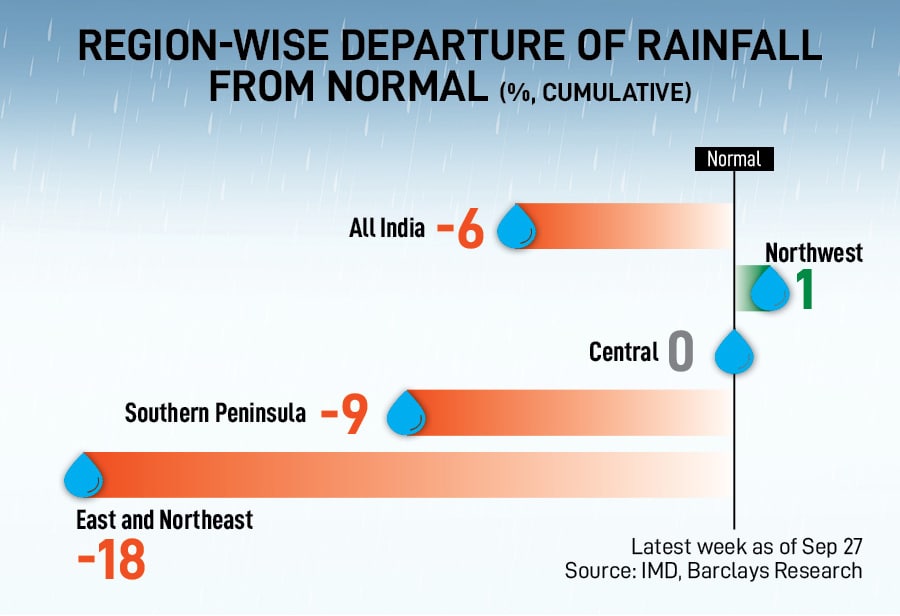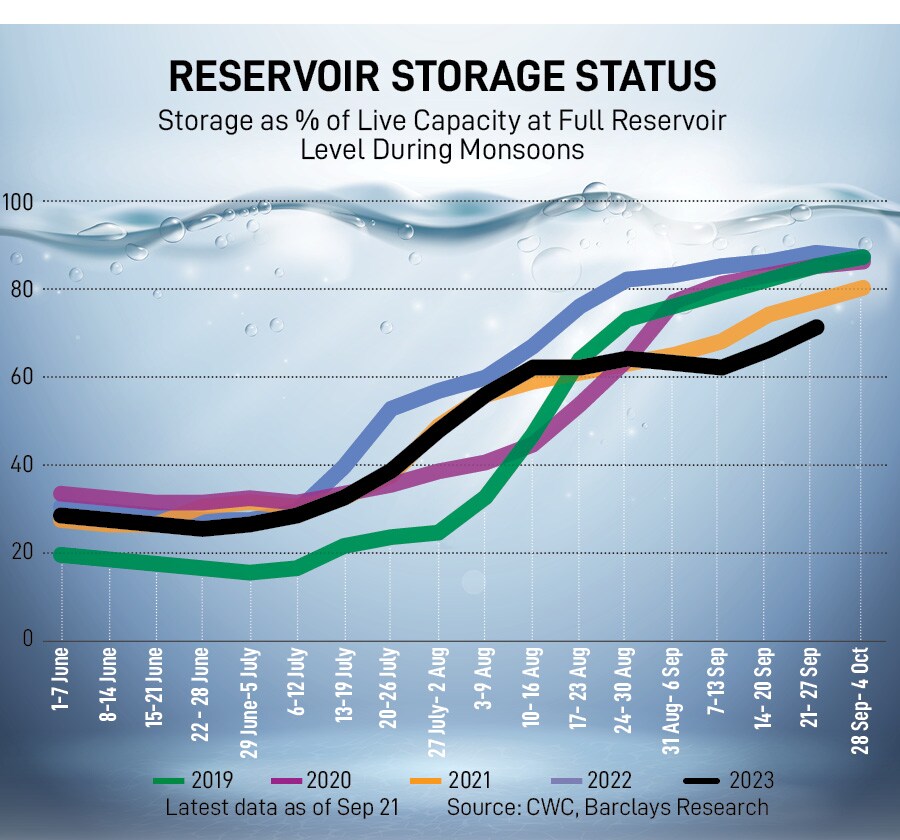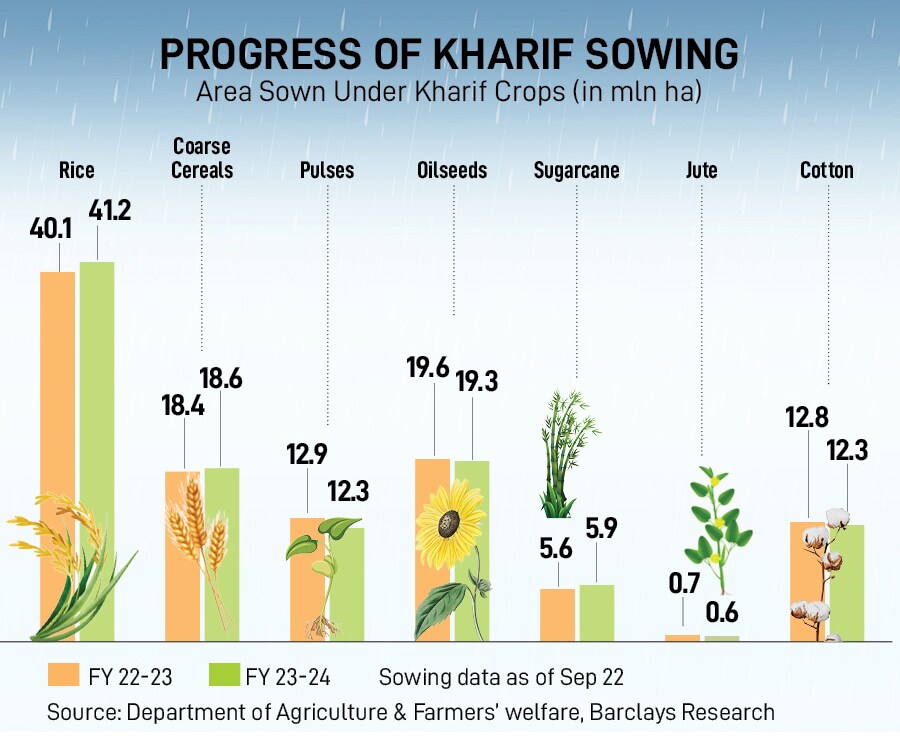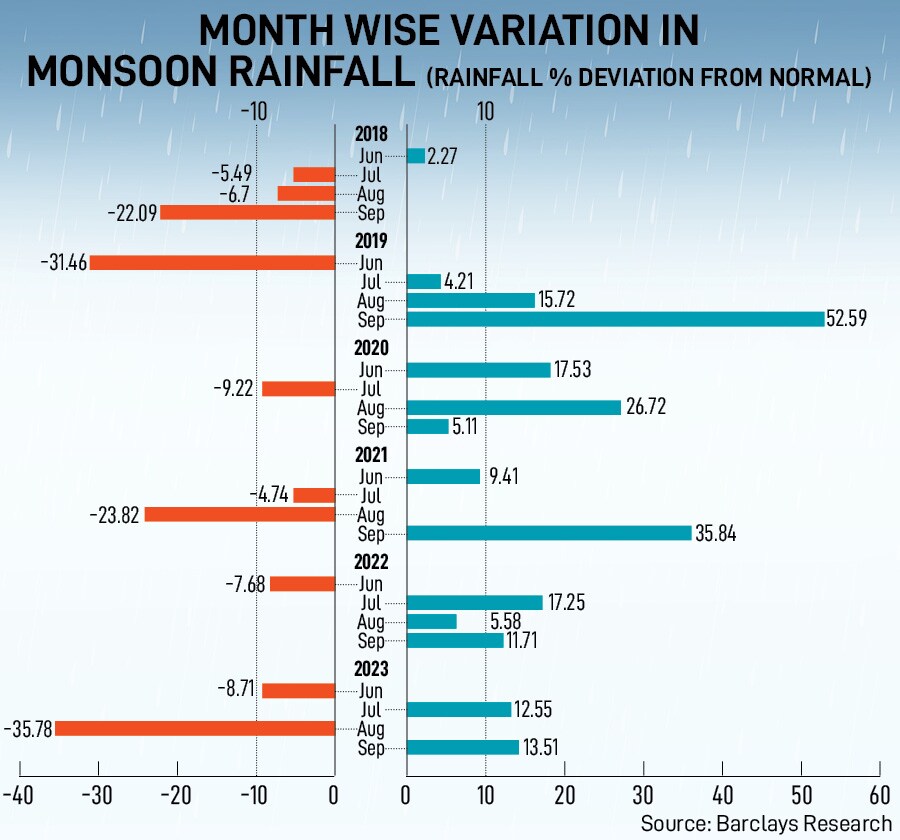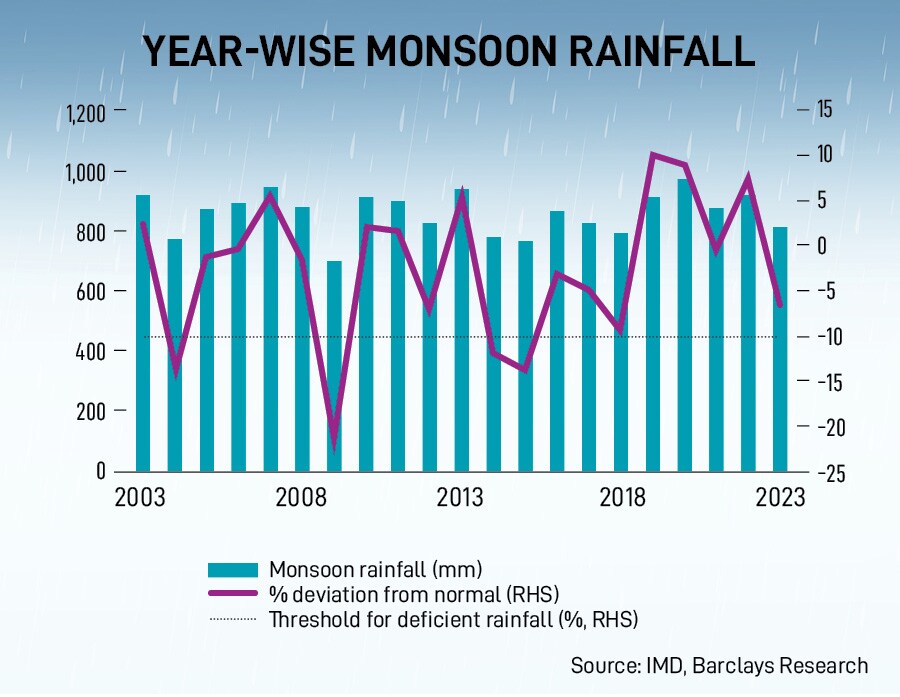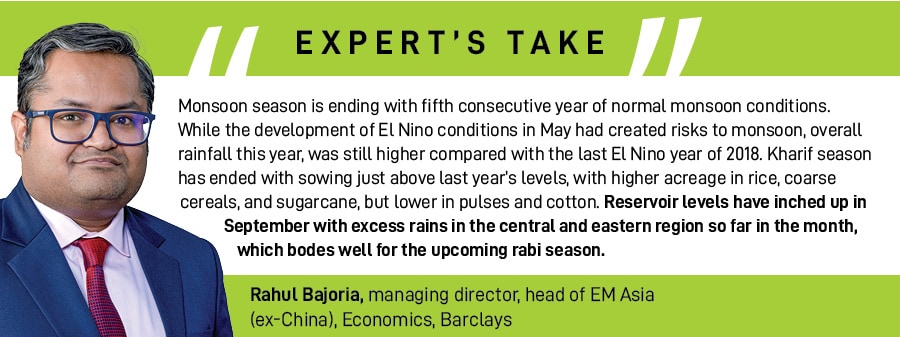
Rain Watch: Season ends with normal monsoon despite El Niño risks
In this concluding part of Forbes India's weekly series Rain Watch, we analyse how monsoon fared overall this year, if El Niño impacted rainfall, and a kharif crop sowing status check
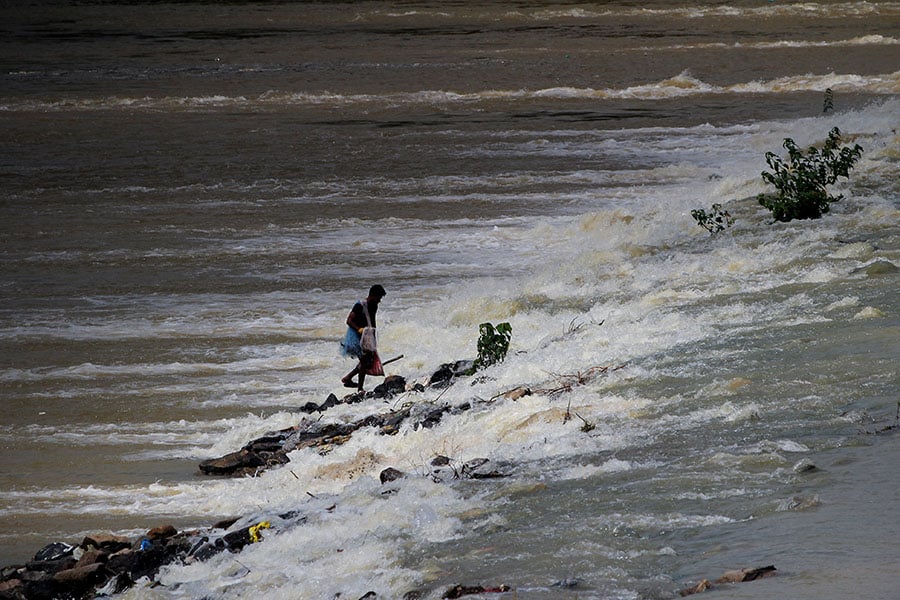 Locals fish in the overflowing waters of the Daya river on the outskirts of Bhubaneswar, following release of water from the Hirakud Dam on the Mahanadi river after heavy rainfall
Image: STR/NurPhoto via Getty Images
Locals fish in the overflowing waters of the Daya river on the outskirts of Bhubaneswar, following release of water from the Hirakud Dam on the Mahanadi river after heavy rainfall
Image: STR/NurPhoto via Getty Images
With a late surge in rain, the monsoon season has ended ‘normal’ despite erratic and uneven patches, and dry spells in a few regions. While sowing is completed, water storage levels are expected to rise further, with excess rains in North and Central India.
Cumulative rainfall in this year’s monsoon season, from June 1 to September 28, was 6 percent below the long-period average (LPA), according to Barclays analysis based on Indian Meteorological Department (IMD) data. This is the fifth consecutive year of ‘normal’ monsoon conditions.
Monsoon rainfall, as a whole, was 94 percent of its LPA, says IMD. “The Southwest monsoon seasonal rainfall over the monsoon core zone, which consists of most of the rainfed agriculture regions in the country, received 101 percent of LPA and thus was normal [94-106 percent of LPA],” it adds. Month-wise, it was 91 percent of LPA in June, 113 percent of LPA in July, 64 percent of LPA in August, and 113 percent of LPA in September. Rainfall deficiency was highest during August, with excess in July and September. Typically, rainfall within +/-10 percent is considered ‘normal’ for the pan-India region, as per IMD.
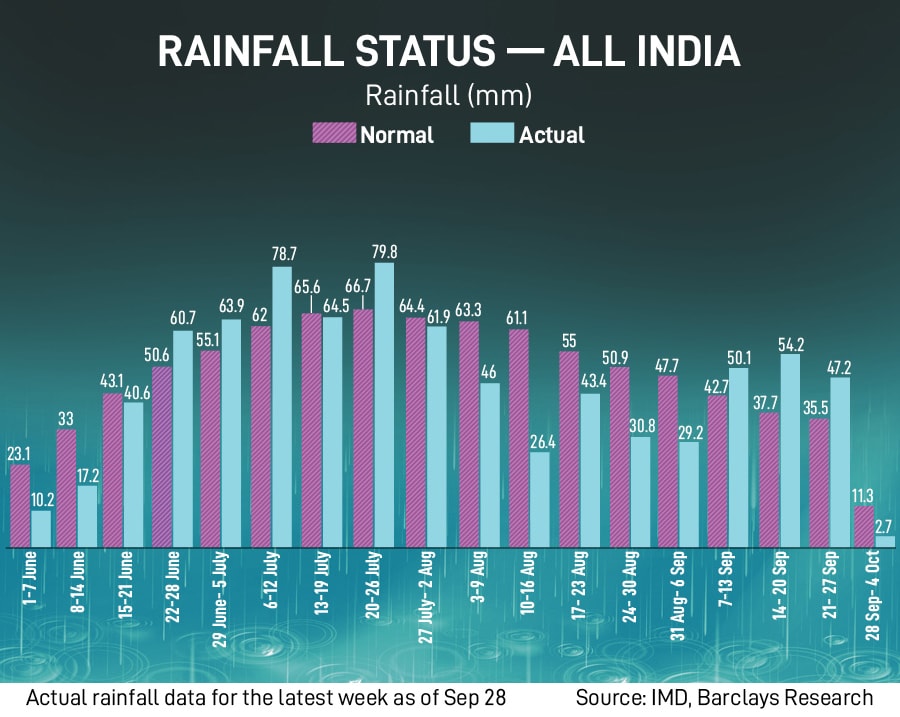
This year monsoon began its retreat on September 25, around eight days later than usual. Even as there was a delay in monsoon in late June, it picked up substantially in the crucial kharif sowing month of July. However, a very dry August raised concerns over the pace of sowing. Monsoon had set in India, starting with Kerala on June 8, as per IMD forecast.
